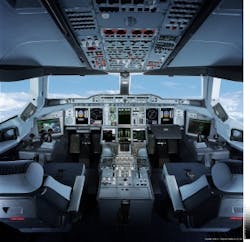Posted by John McHaleAMSTERDAM, The Netherlands, 10 March. 2011. During the ATC Global 2011 conference this week officials from the SESAR Joint Undertaking announced that the Single European Sky ATM Research (SESAR) program is progressing well with 75 percent of the program initiated.The program has 16 Members and about 70 companies on board, said Florian Guillermet, chief program officer at SESAR JU during a presentation at the conference. His presentation was titled: "Nine Months after…"What really helped get SESAR off to a good start was the definition phase, said Lars Lindberg, president of Avtech in Sweden. Industry worked together with the political factions in Europre so that everyone was on the same page, he added. "Now we have the funding and we have a joint set of objectives" and new opportunities are being created. SESAR will really improve air travel from the passenger perspective as delays decrease and the industry as whole becomes more predictable, Lindberg said. It may be boring work from the pilot point of view, but it will make commercial air travel much more efficient, he added.For more on SESAR attend Avionics & Defence Electronics Europe 2011 next week in Munich, Germany.SESAR includes about 300 projects with the average product lasting four years with an average budget of about 7 million Euros and dependencies with five other projects, Guillermet said.Airspace Users directly involved in projects include: Air France & Regional, KLM, Iberia; Lufthansa Group including SWISS and LCAG; SAS Scandinavian Airlines, TAP Portugal, Novair; and a consortium coordinated by EBAA including Netjets Europe and Dassault Aviation, as well as IATA, and IAOPA.Guillermet discussed how a single European architecture will be the reference point for systemdevelopments. "There will also be traceability from technical system developments to the delivery of tangible benefits," he continued. "Interoperability will be achieved through performance and interface requirements."Things are moving along quite well especially with the work Airbus is doing and in the different SESAR work packages, Lindberg said. Progress is being made as well with developing flight management systems and other avionics that integrate with the SESAR technology, he added
Voice your opinion!
Voice your opinion!
To join the conversation, and become an exclusive member of Military Aerospace, create an account today!
Most Read
Most Read

